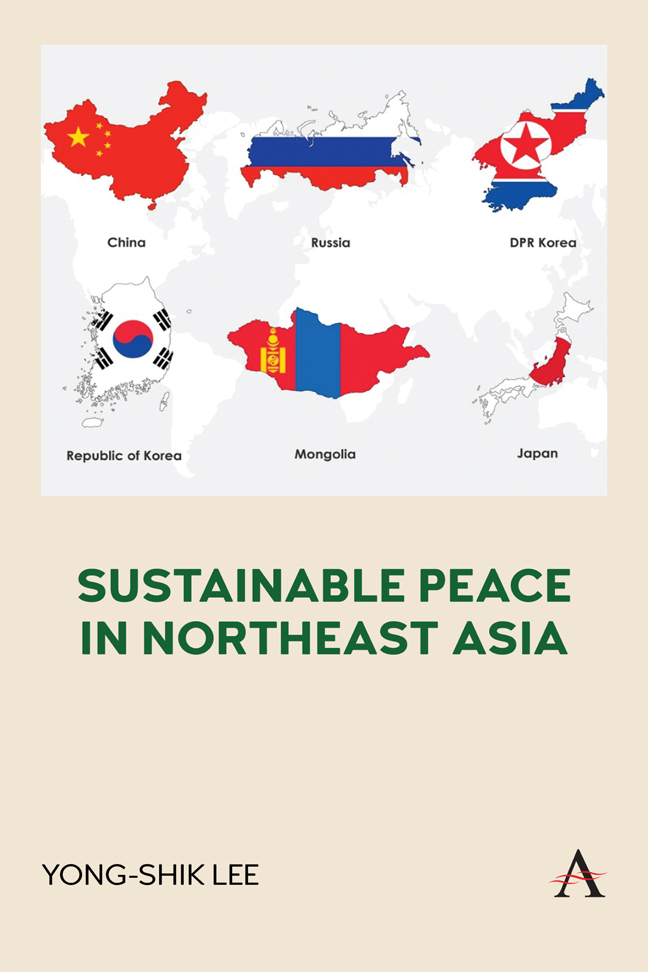Book contents
- Frontmatter
- Dedication
- Advanced Reviews
- About the Author
- Contents
- Figures
- Tables
- List of Abbreviations
- Foreword
- Preface
- Acknowledgments
- 1 Introduction
- 2 The Heritage from the Cold War—North Korea and the Nuclear Crisis
- 3 The New Asian Paradigm or Return to the Old Asia—Rise of China and its Role in the Region
- 4 A New Balancer in the Region? South Korea at the Crossroads
- 5 A Power With Rising Concerns: Escalation of Tensions Between Japan and its Neighbors
- 6 Insiders from the Outside: The United States and Russia
- 7 A Hidden Player: Mongolia and its Role in the Power Dynamics of Northeast Asia
- 8 Pathway to Peace and Stability in Northeast Asia
- Notes
- Bibliography
- Index
6 - Insiders from the Outside: The United States and Russia
Published online by Cambridge University Press: 29 February 2024
- Frontmatter
- Dedication
- Advanced Reviews
- About the Author
- Contents
- Figures
- Tables
- List of Abbreviations
- Foreword
- Preface
- Acknowledgments
- 1 Introduction
- 2 The Heritage from the Cold War—North Korea and the Nuclear Crisis
- 3 The New Asian Paradigm or Return to the Old Asia—Rise of China and its Role in the Region
- 4 A New Balancer in the Region? South Korea at the Crossroads
- 5 A Power With Rising Concerns: Escalation of Tensions Between Japan and its Neighbors
- 6 Insiders from the Outside: The United States and Russia
- 7 A Hidden Player: Mongolia and its Role in the Power Dynamics of Northeast Asia
- 8 Pathway to Peace and Stability in Northeast Asia
- Notes
- Bibliography
- Index
Summary
6.1 Historical Context: “Insiders from the Outside”
6.1.1 The emergence of the United States in Northeast Asia
The United States and Russia are “outsiders” in Northeast Asia because most or all of their territory is located outside the region. The United States holds no territory in Northeast Asia although it has Guam and the Saipan Islands in the Western Pacific. Russia has held territory along the eastern shores of Northeast Asia (Khabarovsk Krai and Primorsky Krai) and above the Amur River (Amur Oblast) since the late nineteenth century although most of its vast territory and population are located outside Northeast Asia. Yet, both are also “insiders” because they have exercised a massive influence in the region, particularly since the end of World War II, shaping the region's political and economic landscape. The United States and the Soviet Union, Imperial Russia's successor, became the two most important countries leading the capitalist free world and the communist bloc, respectively, and forming their own alliances in Northeast Asia. This chapter discusses these countries’ engagements in Northeast Asia and their profound impact on war and conflicts in the region, beginning with the United States.
The United States, which was still in the process of its own national development throughout the nineteenth century, was a relative late-comer to Asia, initially focusing on missionary operations in China and elsewhere. However, commercial interests drove the United States to follow the path of other European powers by seeking economic privileges from China. The United States signed the Treaty of Wanghia with China in 1844 and secured concessions mirroring those gained by Britain through its treaty with China two years earlier (the Treaty of Nanjing). The treaty included the granting of extraterritoriality—the idea that foreigners operating in China would only be subject to the laws of their home countries. It also stipulated fixed tariffs on trade, opened ports for American traders, and conferred rights to build churches and hospitals therein. The United States also received most-favored-nation (MFN) status, which accorded the United States the same beneficial treatment China gave to other European powers. Thus, the United States could reap the benefits of Europe's exploitation of China while still being seen as the least aggressive Western power. Because the United States did not take initiatives against China, Chinese officials viewed Americans as less of a threat.
- Type
- Chapter
- Information
- Sustainable Peace in Northeast Asia , pp. 117 - 140Publisher: Anthem PressPrint publication year: 2023



